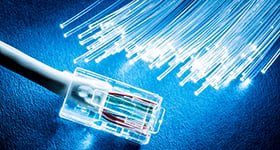The race between LTE and Wi-Fi for IoT dominance is only going to heat up over the next year. AT&T is playing heavily in the cellular camp, obviously, and this week is introducing a new family of LTE modules to meet the needs of a broad range of IoT applications at its AT&T Developer Summit in Las Vegas, NV on Jan. 5, the day before CES begins.
The new modules offer multiple options and run on the AT&T 4G LTE network in order to help IoT devices transfer information more efficiently. An LTE-only option offers low current to improve device battery life, and other module variants include built-in GPS, voice and data. Modules are available that support both 4G and 3G networks.
“Businesses depend on IoT solutions for gathering real-time information on assets across the world,” said Chris Penrose, SVP, IoT, AT&T Mobility. “We’re pleased to be able to facilitate the availability of cost-effective modules so our customers can deploy IoT solutions over the AT&T 4G LTE network. The new LTE modules help the battery life of IoT devices last longer so businesses can better serve their customers.”
AT&T worked with Wistron NeWeb, a module and device manufacturer, to design the new LTE modules. They use an industry standard surface-mount package specified by the European Telecommunications Standards Institute (ETSI). With this module design, companies can build IoT devices that can interchange modules for different uses. It can also simplify a transition to next-generation modules.
In addition, AT&T has developed some research designed to help businesses more effectively use the IoT and, in it, the company shares data on how connected devices can help cut costs, grow revenues, boost efficiency and satisfy customers.
Click here to download.
The report, “The Right Information Can Change the World,” explains the opportunity for businesses as millions of connected devices and processes join the IoT.
“There’s a lot of noise out there about the IoT. Our goal is to replace confusion with clarity,” said Penrose. “Businesses can harness data safely and more securely from the IoT. They can then predict, learn and make near real-time decisions – and that can create a distinct competitive advantage.”
Edited by
Maurice Nagle





